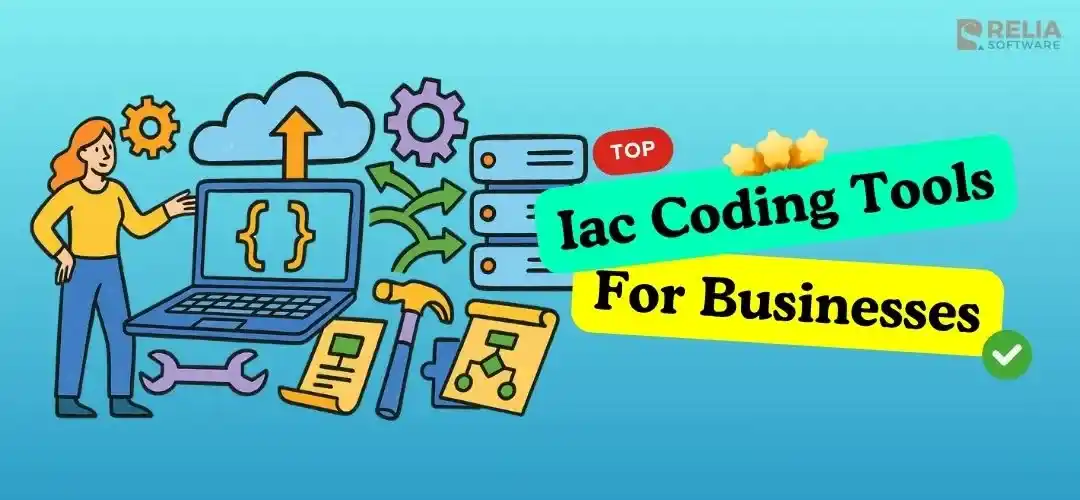By using Infrastructure as Code (IaC), companies may scale successfully, keep consistency across environments, and improve their operational efficiency. For this reason, choosing a suitable Infrastructure as Code (IaC) tool for your projects is quite crucial for the company. However, choosing from a large number of possibilities could be difficult. This article will offer you the top 20 Infrastructure as Code tools, together with information on their key features for you to review, thereby helping you to make the right decisions
IaC Tools | Primary Use Case | Supported Languages | Cloud Compatibility |
Terraform | Multi-cloud provisioning | HCL, JSON | AWS, Azure, GCP, and others |
Ansible | Configuration management & automation | YAML | Cloud-agnostic |
AWS CloudFormation | AWS resource provisioning | YAML, JSON | AWS only |
Azure Resource Manager (ARM) | AWS resource provisioning | JSON | Azure only |
Pulumi | Multi-cloud provisioning with code | TypeScript, Python, Go, C#, Java | AWS, Azure, GCP, and others |
Chef | Configuration management | Ruby | Cloud-agnostic |
Puppet | Configuration management | Puppet DSL | Cloud-agnostic |
SaltStack | Configuration management & orchestration | YAML, Jinja | Cloud-agnostic |
Kubernetes Operators | Kubernetes resource management | Go | Kubernetes environments |
Serverless Framework | Serverless application deployment | YAML | AWS, Azure, GCP, and others |
Google Cloud Deployment Manager | GCP resource provisioning | YAML, Jinja2, Python | GCP only |
OpenStack Heat | OpenStack resource orchestration | YAML | OpenStack only |
Vagrant | Virtual machine provisioning | Ruby | Local and cloud environments |
Packer | Machine image creation | JSON, HCL | AWS, Azure, GCP, and others |
Docker Compose | Multi-container Docker applications | YAML | Docker environments |
CDK | AWS infrastructure as code | TypeScript, Python, Java, C#, Go | AWS only |
Bicep | Azure resource provisioning | Bicep | Azure only |
Crossplane | Kubernetes-native multi-cloud provisioning | YAML | AWS, Azure, GCP, and others |
Atlantis | Terraform automation via pull requests | HCL (Terraform) | AWS, Azure, GCP, and others |
Terraform
Terraform is a powerful open-source Infrastructure as Code (IaC) that allows engineers to define and deliver infrastructure resources seamlessly across numerous cloud platforms, on-premise deployment, and hybrid environments.
By leveraging a declarative syntax, Terraform enables you to specify the desired state of your infrastructure, allowing the tool to intelligently create, modify, and manage resources to align with your defined objectives. This strategic approach fosters consistency, repeatability, and operational efficiency within your IT landscape.
Key Features
- Declarative Configuration: Explicitly define the desired infrastructure blueprint within configuration files.
- Multi-cloud Support: Seamlessly manage resources across diverse cloud environments, including AWS, Azure, GCP, and private data centers.
- State Management: Maintain a record of your infrastructure's actual state to ensure accurate provisioning and modification.
- Version Control Integration: Collaborate effectively by tracking infrastructure changes through integration with version control systems like Git.
- Advanced Planning: Create execution plans to visualize and validate infrastructure changes before deployment.
- Import Capabilities: Transition existing infrastructure under Terraform management for unified control.
>> Read more:
- What is Terraform Backend? Dive into Terraform Backend S3
- How To Use Terraform for Provisioning A Docker Container?
- Git Undo Commit: How to Undo a Commit in Git with Code Sample?
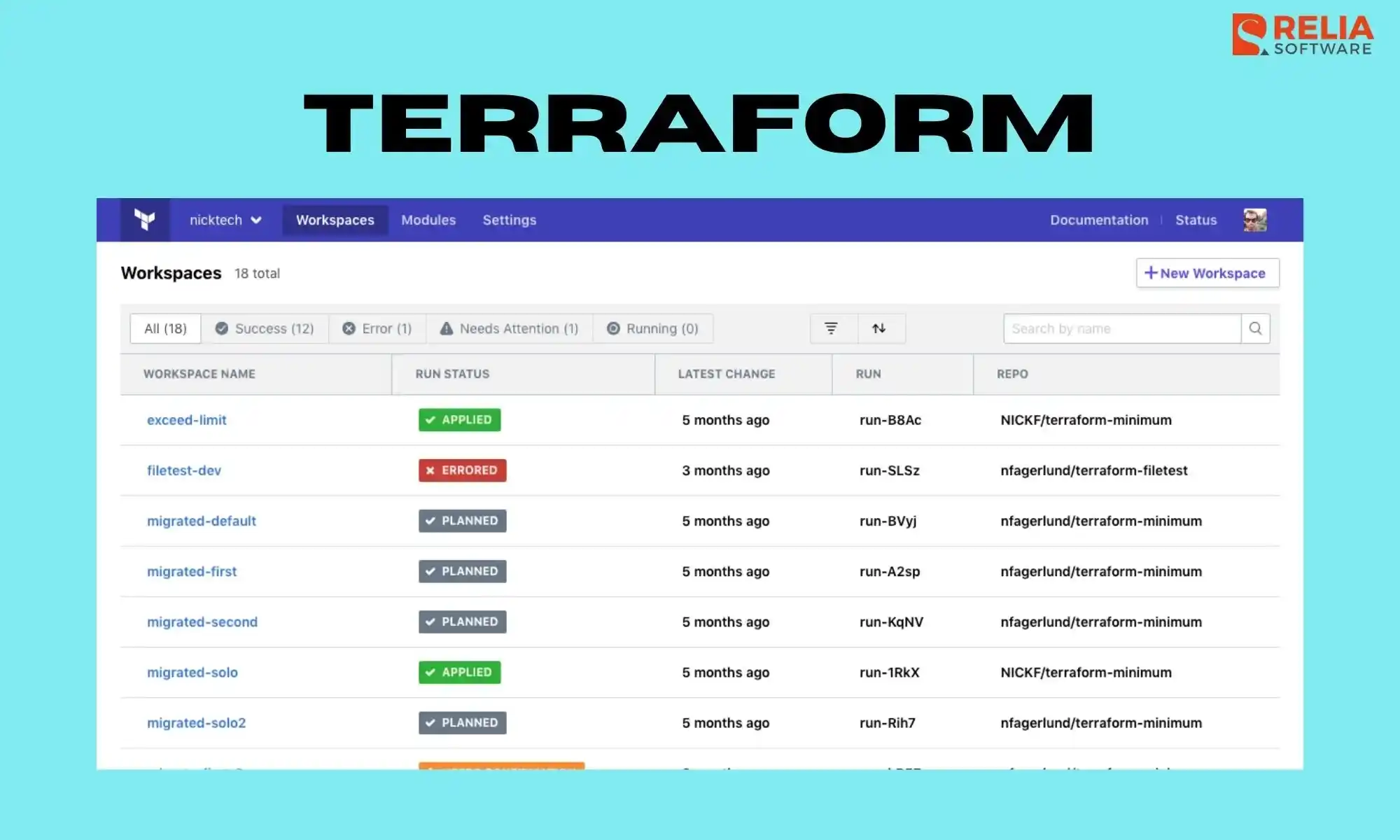
Ansible
Ansible is a strong open-source solution that simplifies and speeds up IT automation processes. Its agentless architecture eliminates the need for additional software on managed systems, resulting in increased efficiency and ease of deployment. Ansible uses SSH or WinRM protocols to securely connect to and manage distant computers.
Ansible is accessible to both beginner and experienced IT professionals due to its user-friendly and human-readable approach. Its ability to specify desired system states in a declarative language increases consistency and repeatability in infrastructure management.
Key Features
- Agentless Architecture: Optimize resource utilization by eliminating the need for agent software.
- Declarative Language: Specify desired system configurations using human-readable YAML syntax.
- Idempotency: Ensure consistent outcomes by executing tasks repeatedly without unintended consequences.
- Inventory Management: Efficiently target groups of hosts for automation.
- Ad-hoc Commands: Execute quick commands on multiple systems for rapid troubleshooting.
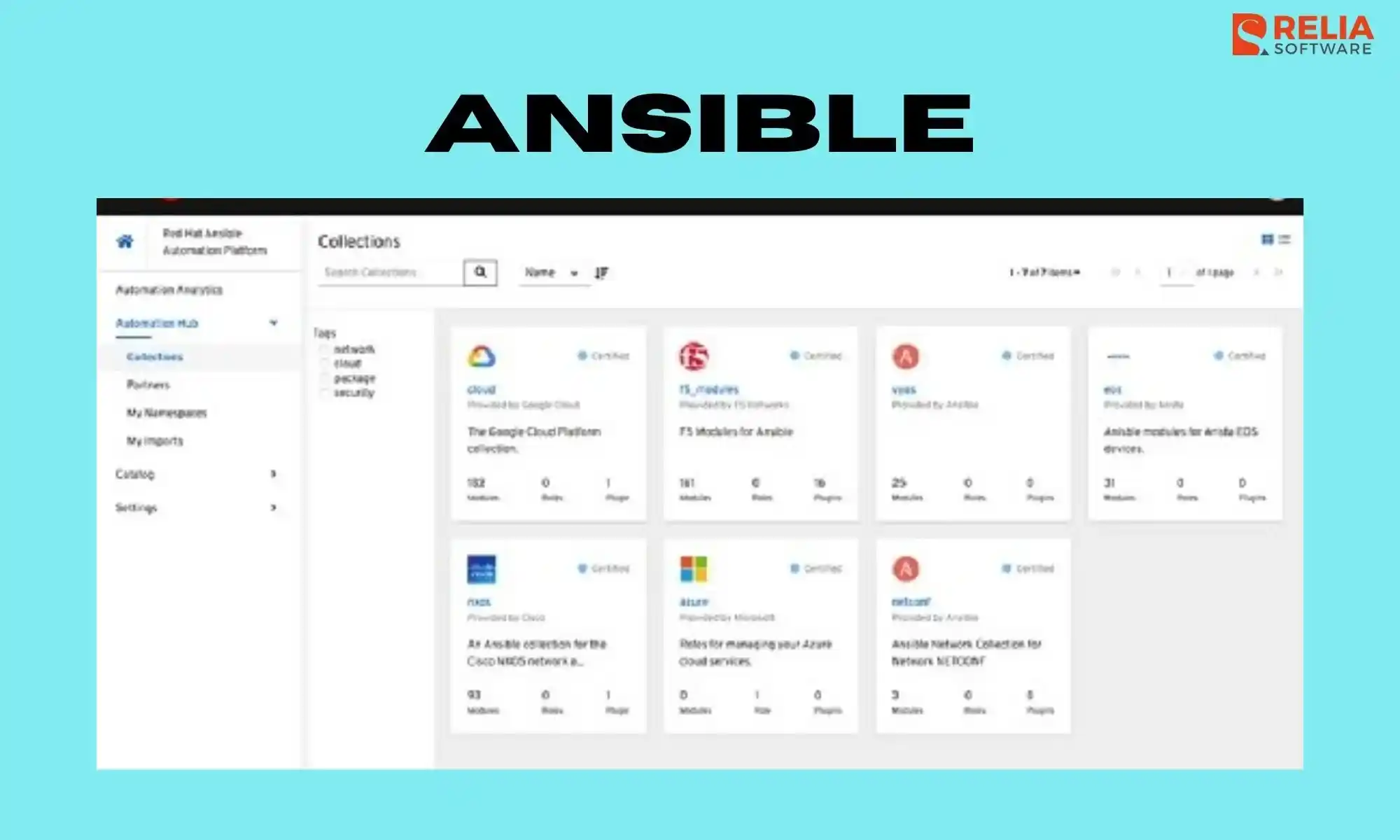
AWS CloudFormation
AWS CloudFormation is a robust IaC service offered by AWS, enabling you to model and manage your AWS resources through declarative templates. By defining the desired state of your infrastructure, CloudFormation automates the provisioning, updating, and de-provisioning of resources, streamlining application management and scaling.
Key Features
- Declarative Syntax: Specify infrastructure requirements using JSON or YAML templates.
- Comprehensive Resource Management: Create, modify, and delete a vast array of AWS resources including EC2 instances, S3 buckets, and RDS databases.
- Stack-based Organization: Group related resources into manageable stacks for efficient management.
- Changeset Review: Assess infrastructure modifications before deployment for risk mitigation.
- Template Reusability: Leverage pre-built templates to accelerate deployments.
- Nested Stack Architecture: Construct intricate infrastructure hierarchies for complex applications.
- Custom Resource Extension: Expand CloudFormation capabilities with custom logic.
- Deep AWS Integration: Seamlessly interact with core AWS services for comprehensive automation.
>> Read more: Upgrade Your AWS Infrastructure with EC2 to ECS Migration

Azure Resource Manager (ARM)
Azure Resource Manager (ARM) is Microsoft's comprehensive platform for deploying, managing, and governing Azure resources. Acting as the cornerstone for Azure infrastructure, ARM empowers organizations to efficiently create, update, and delete resources while ensuring security and organization.
Key Features
- Declarative Deployment: Specify the desired state of your Azure resources using ARM templates.
- Robust Access Control: Implement granular permissions using Role-Based Access Control (RBAC) to protect resources.
- Preventive Measures: Employ locks to safeguard against accidental modifications or deletions.
- Metadata Management: Utilize tags to classify and search resources effectively.
- Template-driven Consistency: Create reusable templates to standardize deployments.
- Customization Options: Execute deployment scripts for tailored configurations.
- Risk Mitigation: Adopt blue-green deployments to minimize downtime and ensure stability.
>> Read more: Build Secure Access Control Systems with Golang RBAC

Pulumi
Pulumi is a cutting-edge IaC platform that empowers developers to build and deploy cloud infrastructure using familiar programming languages. By adopting an imperative approach, Pulumi revolutionizes the way developers interact with infrastructure, enabling them to write infrastructure code with the same fluidity as application code. This paradigm shift accelerates developer adoption and improves overall efficiency.
Key Features
- Imperative Programming: Leverage programming languages to manage infrastructure declaratively.
- Multi-cloud Agility: Build and deploy across multiple cloud providers and Kubernetes environments.
- Robust State Management: Track and manage infrastructure changes effectively.
- Customization Through Custom Resources: Extend Pulumi's capabilities to address specific needs.
- Proactive Security and Compliance: Enforce security and compliance policies as code.
- Cross-platform Development: Build and deploy on various operating systems.
- CI/CD Integration: Streamline infrastructure delivery through CI/CD pipelines.
- Open-source Collaboration: Benefit from a strong community and contribute to the platform's growth.
Code Example
const pulumi = require("@pulumi/pulumi");
const aws = require("@pulumi/aws");
const bucket = new aws.s3.Bucket("my-bucket");
exports.bucketName = bucket.id;
Chef
Chef is a flexible tool for configuration management focused on IT infrastructure automation. It lets engineers precisely design and control system configurations using a Ruby-based DSL. This tool centralizes configurable data using a client-server architecture and distributes execution to client nodes.
Key Features
- Chef Server: Functions as a central repository for storing and managing configuration artifacts.
- Cookbooks: Encapsulate system configurations and recipes for efficient deployment.
- Environments: Manage distinct configuration sets for different environments.
- Nodes: Execute Chef client to apply configurations on target systems.
- Chef Client: Communicates with the Chef Server to fetch and apply configurations.
- Idempotency: Guarantees consistent system state through repeated configuration applications.
- Convergence: Continuously monitors and adjusts system configuration to match desired state.
Code Example
# cookbook/apache2/recipes/default.rb
package 'apache2' do
action :install
end
service 'apache2' do
action [:start, :enable]
end
Puppet
Puppet is an advanced configuration management tool that automates and orchestrates IT infrastructure. By adopting a declarative approach, Puppet enables you to define the desired state of your systems, allowing the platform to intelligently manage changes and maintain consistency. Puppet's master-agent architecture provides a centralized control point for managing configuration data and distributing it to managed nodes.
Key Features
- Declarative Configuration: Specify the desired system state using Puppet's domain-specific language.
- Centralized Management: Leverage the Puppet master for efficient configuration distribution.
- Modular Architecture: Create and reuse configuration components through modules.
- Fine-grained Access Control: Implement role-based access control (RBAC) for security.
- Optimized Performance: Benefit from catalog compilation for faster configuration application.

SaltStack
SaltStack is a powerful open-source platform designed for rapid and scalable IT automation and orchestration. Excelling in large-scale and complex environments, SaltStack prioritizes speed, scalability, and real-time responsiveness. Its master-minion architecture enables centralized control and efficient communication across managed systems.
Key Features
- Master-minion Architecture: Establish centralized control over distributed systems.
- Real-time Execution: Achieve rapid command execution and data retrieval.
- Event-driven Automation: React to system events with automated actions.
- Comprehensive Configuration Management: Deploy and manage configurations efficiently.
- Complex Workflow Orchestration: Coordinate intricate IT processes and dependencies.
- Remote Command Execution: Execute commands on multiple systems simultaneously.
- State Management: Maintain the desired system states through configuration enforcement.
- Customization and Extensibility: Tailor SaltStack to specific needs with modules and states.
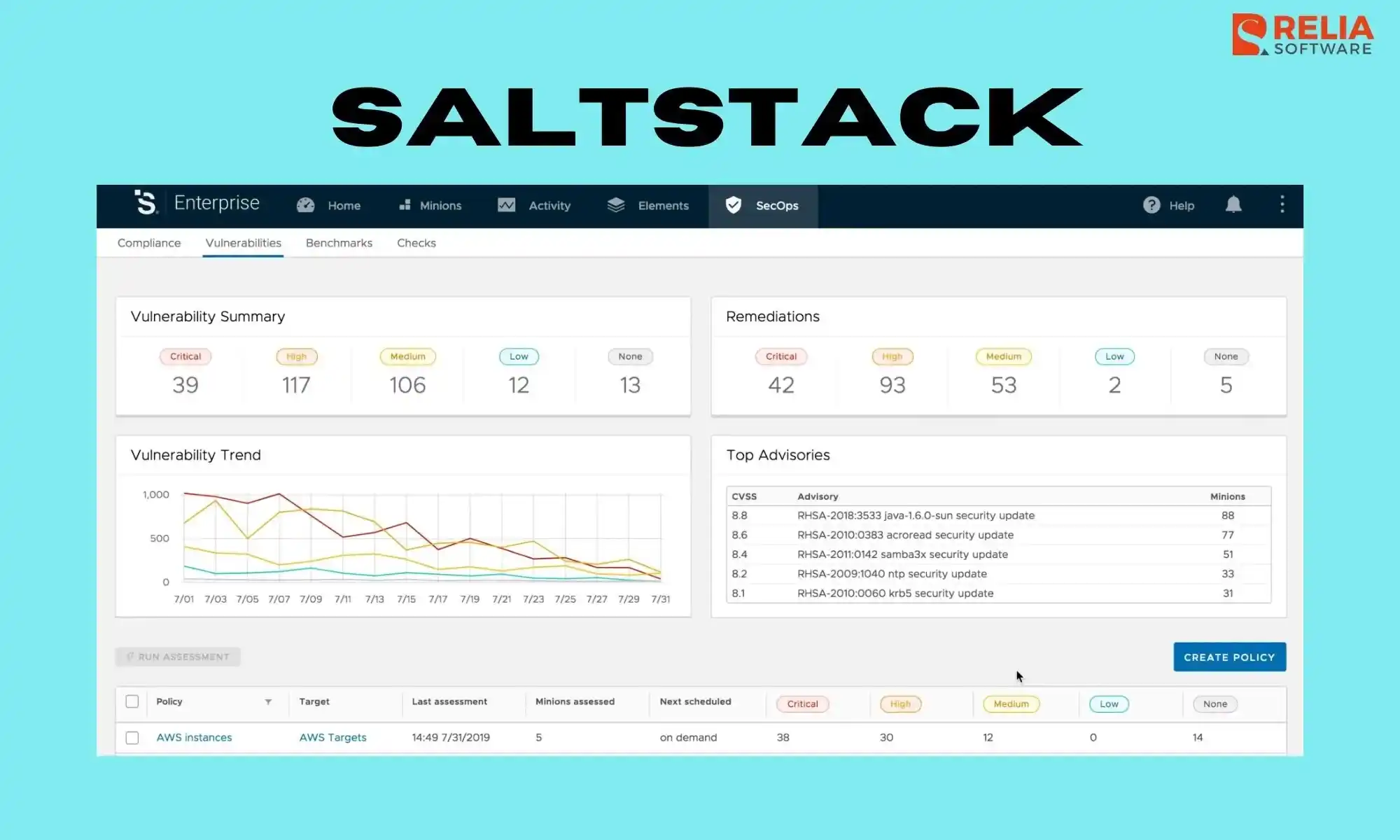
Kubernetes Operators
Kubernetes Operators are software extensions designed to simplify the management of intricate applications within the Kubernetes ecosystem. Operators facilitate declarative configuration and automated lifecycle management by utilizing custom resources. Operators serve as intelligent controllers, always monitoring the health of applications and comparing it to the expected states, to ensure optimal performance and reliability.
Key Features
- Custom Resources (CRs): Define the desired state of applications using customizable resources.
- Control Loop: Continuously monitor and adjust application state to match desired conditions.
- Automated Lifecycle Management: Handle deployment, scaling, updates, and lifecycle operations efficiently.
- Complex Application Expertise: Manage stateful applications and their interdependencies.
- Built-in Best Practices: Incorporate operational knowledge and proven strategies.
- Extensibility: Customize and expand Kubernetes capabilities without core modifications.
>> Read more: A Practical Guide to Kubernetes ConfigMaps for App Configuration
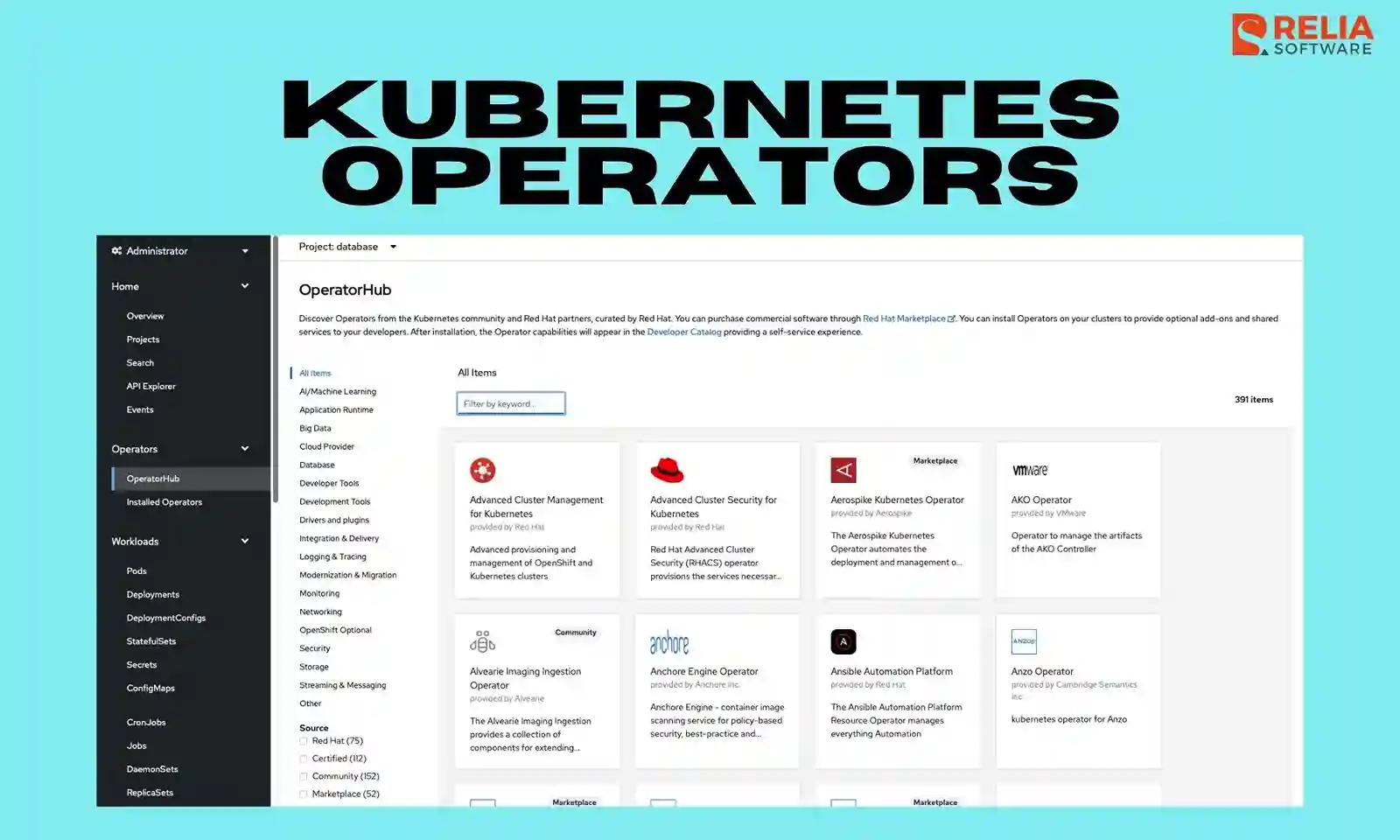
Serverless Framework
The Serverless Framework is a powerful open-source command-line interface (CLI) tool that streamlines the development and deployment of serverless applications. Providing a unified interface for interacting with multiple cloud platforms empowers developers to focus on writing code without being burdened by infrastructure management.
Key Features
- Multi-cloud Compatibility: Deploy serverless functions across various cloud providers.
- Declarative Configuration: Define application resources using YAML for efficient management.
- Rapid Function Deployment: Create and deploy serverless functions quickly.
- API Management: Automatically generate API development endpoints for seamless integration.
- Event-driven Architecture: Connect functions to a wide range of event sources.
- Infrastructure Orchestration: Manage underlying infrastructure resources effortlessly.
- Extensibility: Customize the framework with plugins to meet specific needs.
Code Example
// handler.js
exports.hello = async (event) => {
return {
statusCode: 200,
body: JSON.stringify({
message: 'Hello from Serverless!',
}),
};
};
Google Cloud Deployment Manager
Google Cloud Deployment Manager is a sophisticated tool for defining and deploying Google Cloud Platform (GCP) Infrastructure as Code. Using declarative configuration files, you can explicitly express the desired state of your infrastructure, allowing for consistent and repeatable deployments across several environments.
Key Features
- Declarative Configuration: Create infrastructure blueprints using YAML or Python templates.
- Comprehensive Resource Management: Manage the full lifecycle of GCP resources.
- Accelerated Deployments: Leverage pre-built blueprints for rapid provisioning.
- Dependency Management: Ensure correct resource order for successful deployments.
- Configuration History: Track infrastructure changes for auditing and rollback.
- Error Recovery: Roll back deployments to previous states in case of failures.
- Ecosystem Integration: Leverage other GCP services for enhanced workflows.

OpenStack Heat
OpenStack Heat is a sophisticated orchestration engine that manages and deploys massive cloud applications using declarative templates. Heat automates resource provisioning, updating, and removal based on your application's desired state.
Key Features
- Declarative Templates: Specify infrastructure using YAML or JSON for efficient management.
- Resource Orchestration: Create, modify, and delete OpenStack resources automatically.
- Dependency Management: Handle resource interconnections for reliable deployments.
- Stack-based Organization: Group-related resources for improved manageability.
- Event-driven Automation: Trigger actions based on resource changes.
- Seamless OpenStack Integration: Leverage other OpenStack services for comprehensive solutions.
- API Flexibility: Interact using either OpenStack-native or CloudFormation-compatible APIs.

Vagrant
Vagrant is a powerful tool for constructing and managing portable development environments. By encapsulating application environments into reproducible packages, Vagrant ensures consistency across different operating systems and development machines. Its compatibility with diverse virtualization platforms, including VirtualBox, VMware, Docker, and cloud providers like AWS, enhances its flexibility and adaptability.
Key Features
- Portability: Easily share and replicate development environments.
- Platform Independence: Utilize various virtualization technologies.
- Automated Provisioning: Configure virtual machines through scripts or configuration management tools.
- User-friendly Interface: Simplify the creation and management of environments.
- Ecosystem Integration: Combine with other software development tools for enhanced workflows.
Code Example
Vagrant.configure("2") do |config|
config.vm.box = "ubuntu/focal64"
config.vm.provider "virtualbox" do |vb|
vb.name = "my_ubuntu_box"
vb.memory = "1024"
end
end
Packer
A flexible tool, Packer efficiently creates and spreads exact machine pictures on several platforms. By defining a single source configuration, Packer automates the creation of consistent and repeatable images, hence simplifying the provisioning process.
Key Features
- Multi-platform Compatibility: Create images for diverse platforms.
- Flexible Provisioning: Configure images using various methods and tools.
- Customizable Build Process: Leverage builders and provisioners for tailored image creation.
- Image Optimization: Enhance image performance with post-processing techniques.
- Accelerated Image Creation: Build multiple images simultaneously.
- Reliable Image Consistency: Ensure identical image creation with idempotency.
>> Read more: A Complete Guide for Building Multi-Arch Docker Images
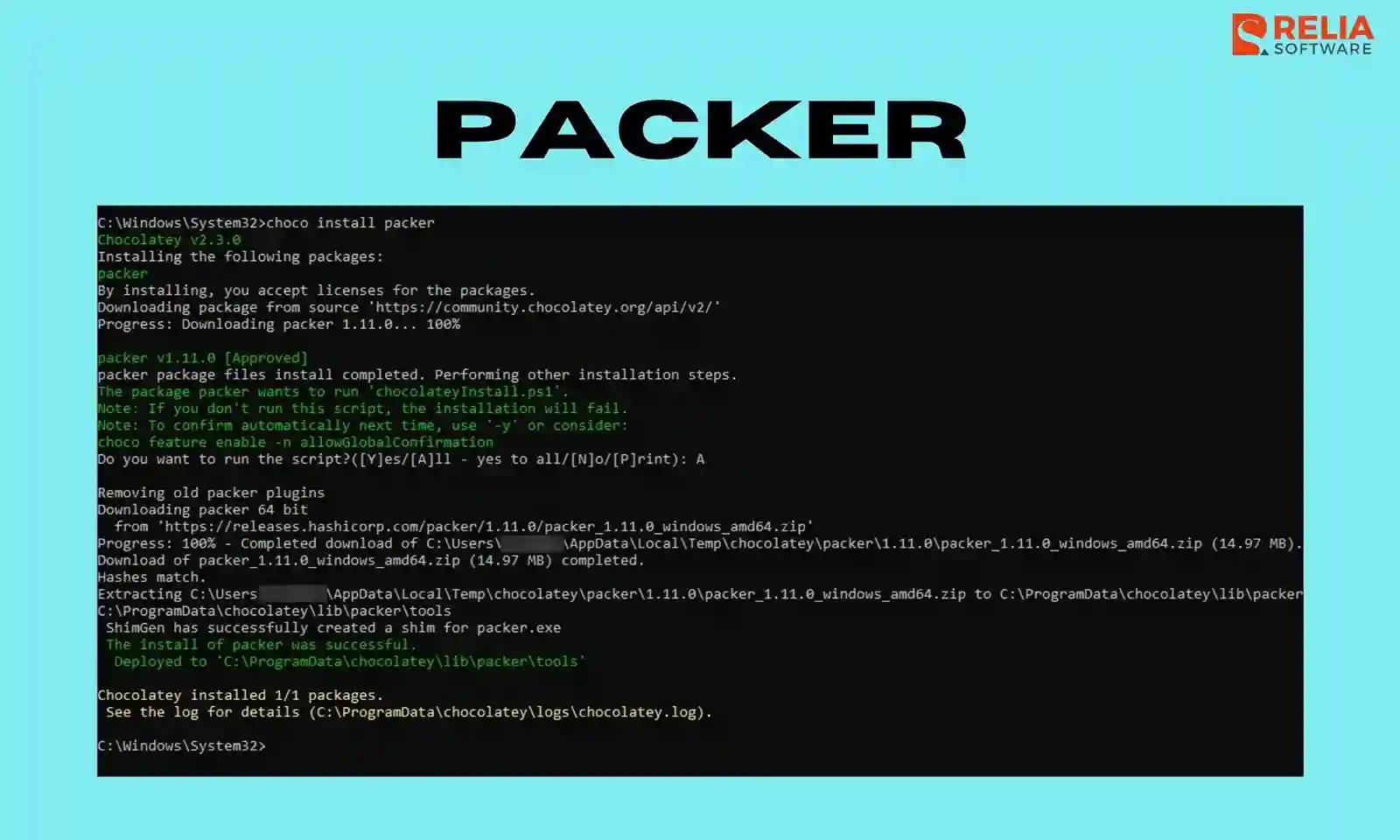
Docker Compose
Docker Compose is an effective tool for coordinating multi-container Docker applications. A declarative YAML configuration file allows you to easily create and manage the services, networks, and data volumes required by your application. With a single command, you can quickly develop and launch your whole application stack.
Key Features
- Multi-container Orchestration: Manage and coordinate multiple containers as a unified service.
- Declarative Configuration: Define application components using user-friendly YAML syntax.
- Rapid Application Lifecycle Management: Quickly start, stop, and rebuild application services.
- Isolated Environments: Create distinct environments for development, testing, and production.
- Persistent Data Management: Define and manage shared data volumes between containers.
- Seamless Docker Integration: Leverage the Docker ecosystem for enhanced capabilities.
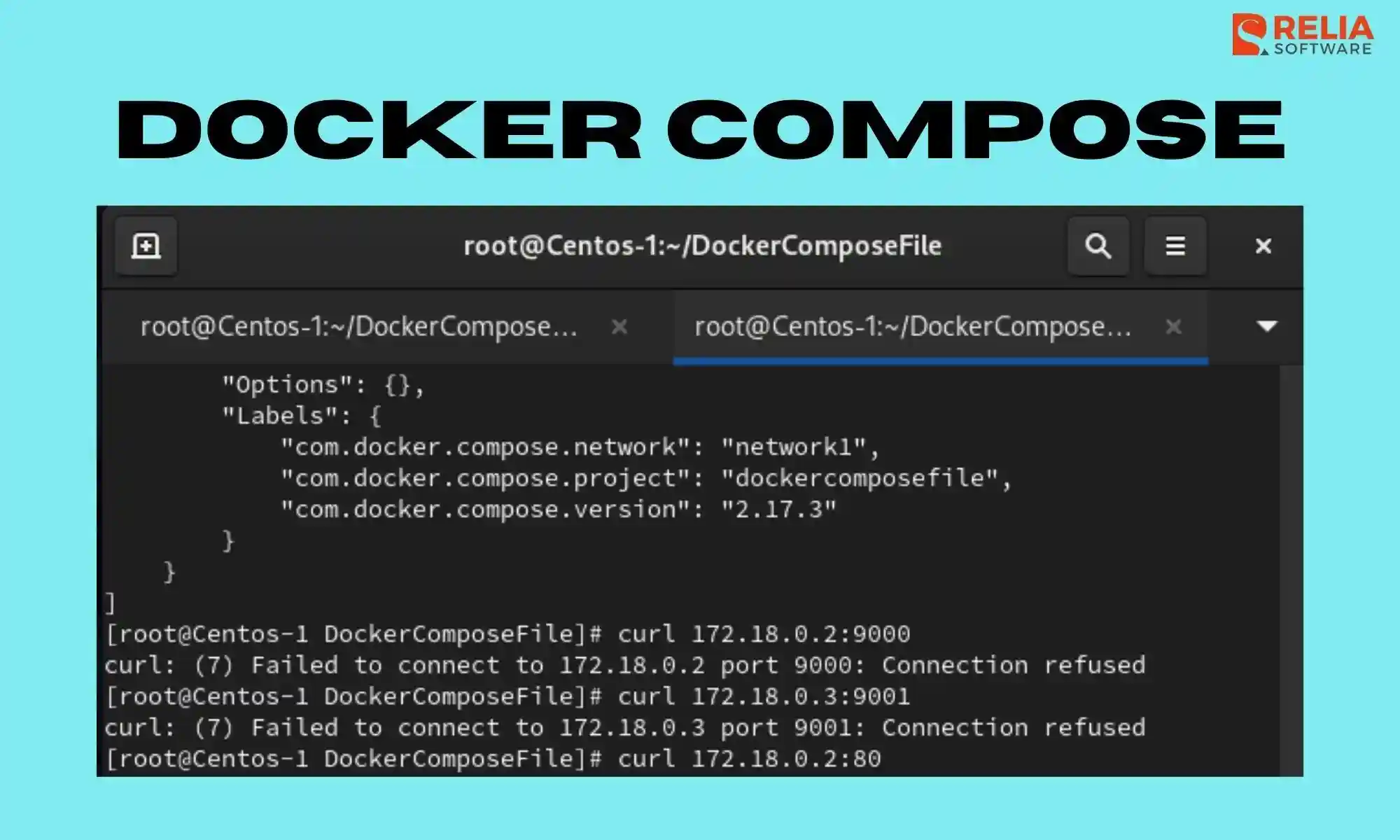
CDK (Cloud Development Kit)
The Cloud Development Kit (CDK) is an open-source software development framework that allows you to define cloud infrastructure in code using familiar programming languages. It provides a higher-level abstraction over Infrastructure as Code (IaC) tools like AWS CloudFormation, Azure Resource Manager, and Google Cloud Deployment Manager. CDK simplifies the process of defining and provisioning cloud resources by offering object-oriented constructs and reusable components.
Key Features
- Language Support: Offers support for multiple programming languages, including TypeScript, JavaScript, Python, Java, C#, and Go.
- Object-oriented Approach: Provides an object-oriented way to define cloud resources, making code more readable and maintainable.
- High-level Abstractions: Encapsulates complex infrastructure patterns into reusable components, reducing boilerplate code.
- Cloud Provider Support: Integrates with major cloud providers like AWS, Azure, Google Cloud, and others.
- Testing and Debugging: Supports unit testing and debugging of infrastructure code.
- CI/CD Integration: Easily integrates with CI/CD pipelines for automated deployments.
- Community and Ecosystem: Benefits from a growing community and ecosystem of libraries and tools.
Code Example
import * as cdk from 'aws-cdk-lib';
import * as s3 from 'aws-cdk-lib/aws-s3';
export class MyStack extends cdk.Stack {
constructor(scope: cdk.App, id: string, props?: cdk.StackProps) {
super(scope, id, props);
new s3.Bucket(this, 'MyFirstBucket', {
bucketName: 'my-first-bucket',
});
}
}
Bicep
Bicep is a developer-centric domain-specific language (DSL) designed to simplify the creation of Azure Resource Manager (ARM) templates. By offering a more concise and readable syntax, Bicep empowers developers to efficiently define and deploy Azure infrastructure. Bicep code seamlessly translates into ARM templates, ensuring compatibility and interoperability.
Key Features
- Declarative Approach: Define the desired infrastructure state using a clear and concise syntax.
- Enhanced Reliability: Benefit from compile-time type checking to prevent errors.
- Modular Design: Create reusable infrastructure components for efficient deployment.
- Improved Developer Experience: Write more readable and maintainable infrastructure code.
- Direct ARM Compatibility: Seamlessly convert Bicep code into ARM templates.
- Integrated Tooling: Leverage popular development environments for efficient workflows.

Crossplane
Crossplane is an open-source control plane framework that empowers organizations to build their internal platforms on top of Kubernetes. It enables the creation of custom resources that abstract away complex infrastructure and application management, providing a self-service experience for developers and operators. Crossplane acts as a bridge between the underlying infrastructure (like cloud providers, Kubernetes clusters, or on-premises systems) and the platform's users.
Key Features
- Custom Resource Definitions (CRDs): Define custom resources to represent platform-specific abstractions.
- Composition: Combine existing resources (like Kubernetes resources, cloud resources) into new composite resources.
- Reconciliation: Continuously monitors the desired state of resources and ensures they match the actual state.
- Multi-cloud and Hybrid Cloud Support: Manage resources across different cloud providers and on-premises environments.
- Policy Enforcement: Implement policies and guardrails to govern resource creation and management.

Atlantis
Atlantis is a robust platform designed to streamline the collaboration and review process for Infrastructure as Code (IaC) teams. By integrating with popular IaC tools like Terraform, Pulumi, and CloudFormation, Atlantis offers a centralized hub for managing, reviewing, and approving infrastructure changes.
Key Features
- Git-based Collaboration: Leverage Git for efficient version control and teamwork.
- Rigorous Code Review: Enforce code reviews through pull requests to maintain quality.
- Automated Change Management: Automate the generation and review of infrastructure changes.
- Extensive Integrations: Connect with popular IaC tools and cloud providers.
- User-friendly Interface: Manage infrastructure changes through an intuitive web interface.
- Comprehensive Audit Trail: Track infrastructure changes and approvals for transparency.
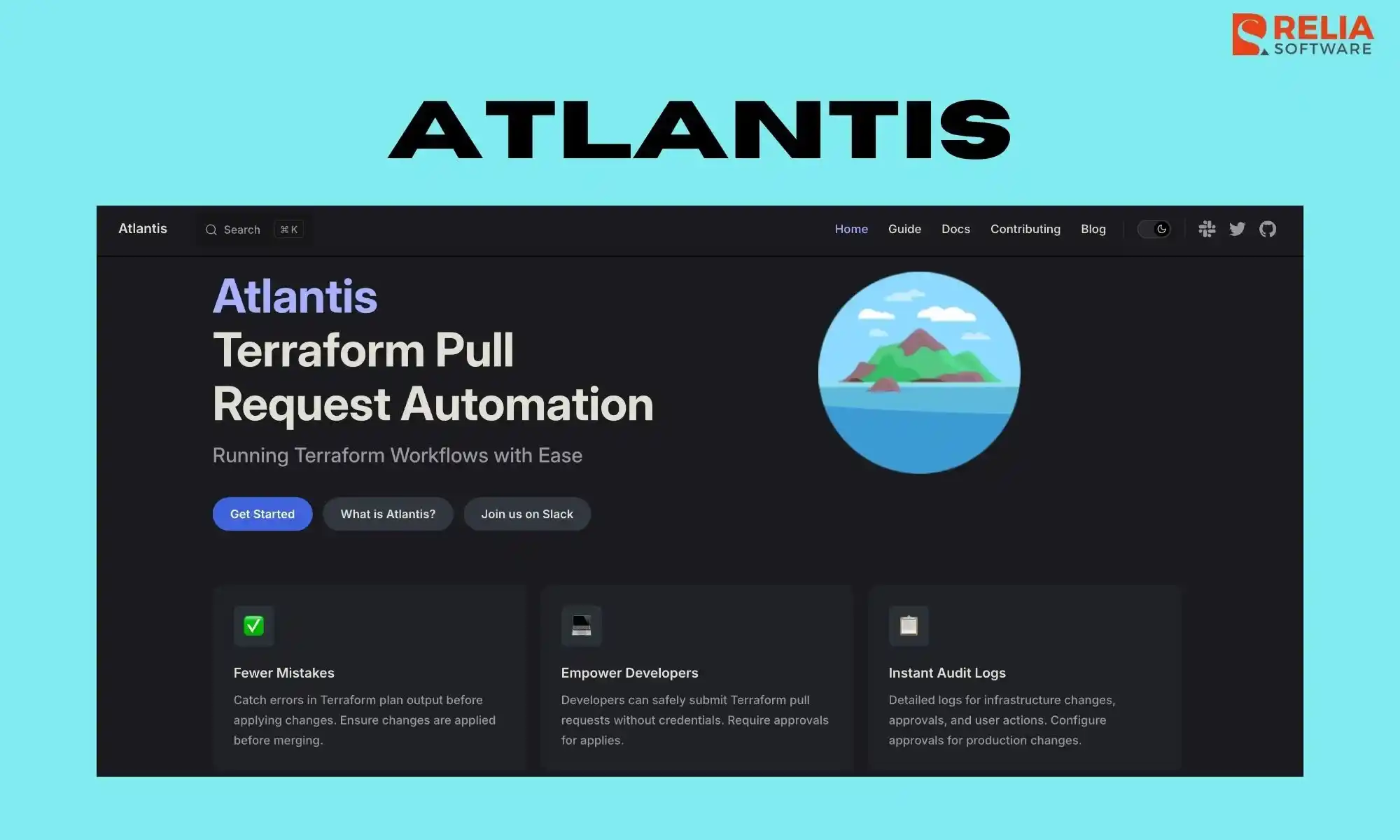
>> Read more:
- 22 Best DevOps Automation Tools For Businesses
- 9 Best DevOps Deployment Tools for Businesses
- Top 10 Full-Fledged Configuration Management Tools
- Top 9 Modern Software Development Tools for Businesses
- Top 10 Automated Code Review Tools For Developers
Conclusion
By carefully evaluating the features of these infrastructures as code tools, businesses can select the optimal solution to meet their specific requirements. Moreover, as technology advances, it's essential to stay updated on the latest trends and innovations in the IaC space to ensure your organization remains at the forefront of infrastructure management.
>>> Follow and Contact Relia Software for more information!
- development
